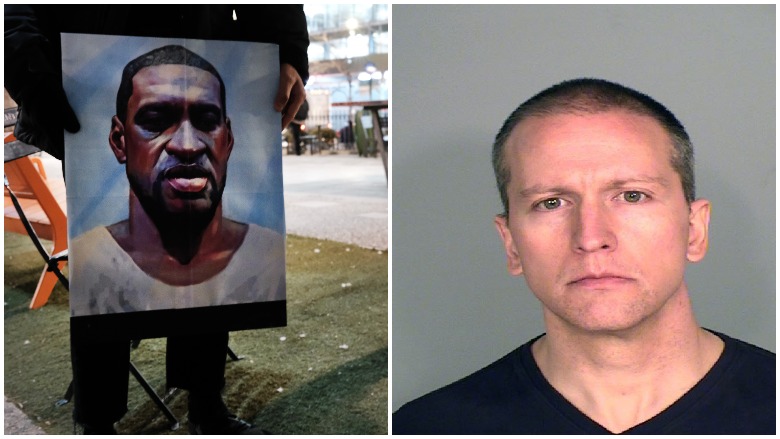
The Minneapolis Police Department issued an update of its training manual Friday, March 12, 2021, as jury selection was underway for the trial of former MPD officer Derek Chauvin in the death of George Floyd. In certain conditions, MPD allowed its officers to restrain a person by the neck, a policy that was changed after Floyd died.
Floyd died in police custody May 25, 2020, sparking a surge of protests across the country. His death was caught on video, which showed Chauvin kneeling on the neck of 46-year-old Floyd.
The training manual says the Minneapolis Police Department’s “most precious” of all duties is the “Sanctity of Life.”
Jury selection began Tuesday, March 9, 2021, at the Hennepin County Government Center. Chauvin pleaded not guilty to second-degree unintentional murder, second-degree manslaughter and third-degree murder. The third-degree murder charge was previously dropped, and then reinstated.
Here’s what you need to know:
The Updated MPD Training Manual Includes More Than 200 Pages Detailing Its Use of Force Policy, Banned Restraints & Procedures
In addition to explicitly banning neck restraints and chokeholds, the updated training manual details elaborate procedures on the use of force and what procedures are allowed. It also explains that body cams must be used when an officer is using force, and says that footage will be accessible to the public if the use of force results in serious bodily injury or if an officer fires a gun. The manual also details procedures for getting medical attention to a person after force is used.
“Any sworn MPD employee who uses force shall, as soon as reasonably practical, determine if anyone was injured and render medical aid consistent with training and Volume Five – Code of Conduct and Use of Force 5-300 Use of Force Page 8 of 37 request Emergency Medical Service (EMS) if necessary (in accordance with P&P 7-350),” the policy says. “Some force control options involve or require additional medical attention. This includes subjects who have visible injuries, lose consciousness, complain of injury or request medical attention.”
The mission statement is included in the training manual, which establishes a commitment to the “Sanctity of Life” “without bias or favor.”
It says:
We, the members of the Minneapolis Police Department, are committed to doing all we can to protect and serve in a way that minimizes harm and risk to our community and to ourselves. Sanctity of Life is the most precious of all our duties. We must serve all our communities without bias or favor.
Public safety is not just the absence of crime, it is the presence of justice. Every aspect of our professional service must demonstrate our commitment to procedural justice. We will act by giving others Voice and Respect, being Neutral and building Trust in our interactions.
The New MPD Training Manual Explicitly Bans Neck Restraints & Chokeholds But They Were Allowed Under Certain Circumstances at the Time of Floyd’s Death
The Minneapolis Police Department issued the latest update on its training manual Friday, March 12, 2021, but it has been months since the department banned neck restraints and choke holds. At the time of Floyd’s death in 2020, officers in the Minneapolis Police Department were authorized to restrain a person by the neck using their leg or arm as a compliance tactic.
Mylan Masson, a longtime Minneapolis police officer and former director of the Hennepin Technical College law enforcement and criminal justice education center, elaborated on the policy in an interview with the Minneapolis Star Tribune. About half the state’s police officers are trained at the college.
“Once the [officer] is in control, then you release,” Masson said. “That’s what use of force is: You use it till the threat has stopped.”
Neck restraints were taught at the college until about 2016. At the time of Floyd’s death, most police departments in the state banned neck restraints, but they were still allowed in the MPD.
Exhibit A in the Chauvin case presents toxicology findings that say Floyd ingested a fatal dose of fentanyl before his death and said there was no physical evidence Floyd was asphyxiated, while an independent medical examination found Floyd died from asphyxia.